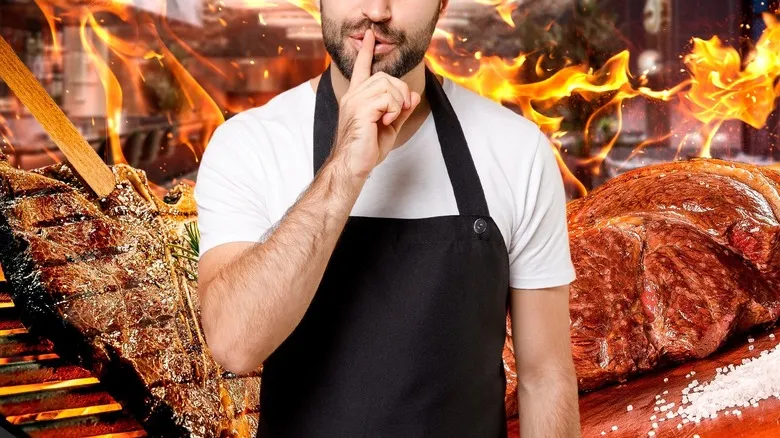Choose steaks with a high fat content and don't be afraid to try underrated cuts
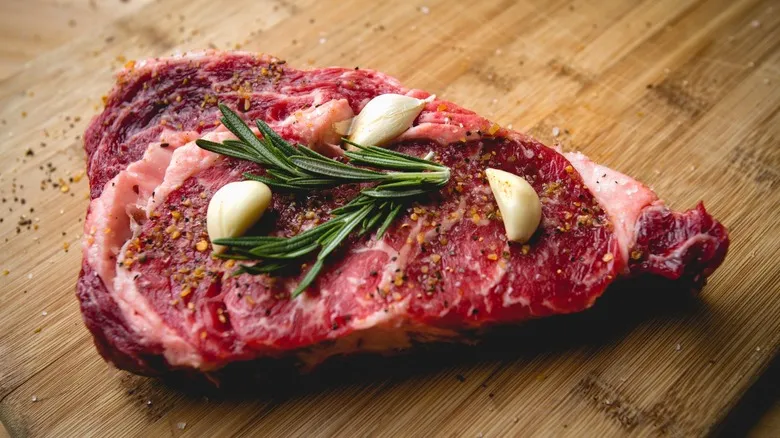
A fantastic steak begins with... well, a fantastic steak. As Kylian Goussot, the executive chef at Lafayette Steakhouse, shared, "It's tough to ruin a good steak, but even tougher to make a bad one taste good." Goussot suggests opting for a cut that has some fat, like a ribeye or a cowboy steak. He explained, "The fat renders during cooking and seeps into the meat, keeping it juicy." Other cuts with good fat content include the New York strip, T-bone, and skirt steak. And if you're looking for exquisite marbling, you can't go wrong with Wagyu.
Many of the experts we consulted also encouraged experimenting with different cuts to elevate your dining experience. For instance, consider replacing your filet mignon with a more flavorful chuck flap or hanger steak. Carlos Anthony, executive chef at Hawkeye & Huckleberry Lounge, mentioned, "I really enjoy the coulotte. This is the cap of the top sirloin, perfect for grilling as a whole—it's lean meat with an incredible fat cap. This cut is both tasty and satisfying. Just keep this butcher's secret to yourself!"
Steak can handle a lot of salt -- don't be afraid to use it liberally
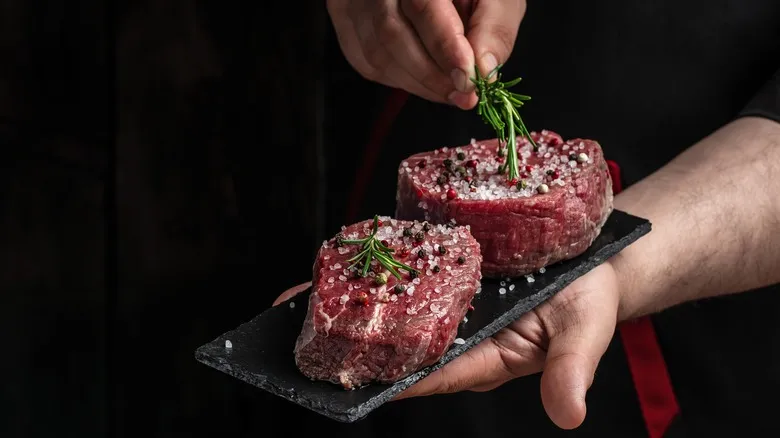
One of the most common errors people make with steak is failing to season it adequately. Properly salting your steak is essential for a number of reasons. Firstly, salt helps draw moisture to the surface of the meat. While some of this moisture may evaporate, a significant portion is reabsorbed, enhancing the flavor throughout the meat. Additionally, salt acts as a tenderizer by breaking down certain muscle proteins, resulting in a juicier steak. To season like a professional, don’t be shy with the salt. Chef Carlos Anthony suggests using approximately 2% of the steak's weight in salt.
Along with generous salting, timing is key to achieving a delicious crust. Most chefs agree that allowing the salt to sit longer yields better results. "I salt my steaks about an hour before cooking, allowing them to sit out to sweat," says David Figueroa, president and co-founder of Melinda's Foods. "Once they’ve released some moisture, I pat them dry with a paper towel, salt them again, and add freshly ground black pepper just before they go on the pan or grill."
Lightly smoke your steak before cooking it
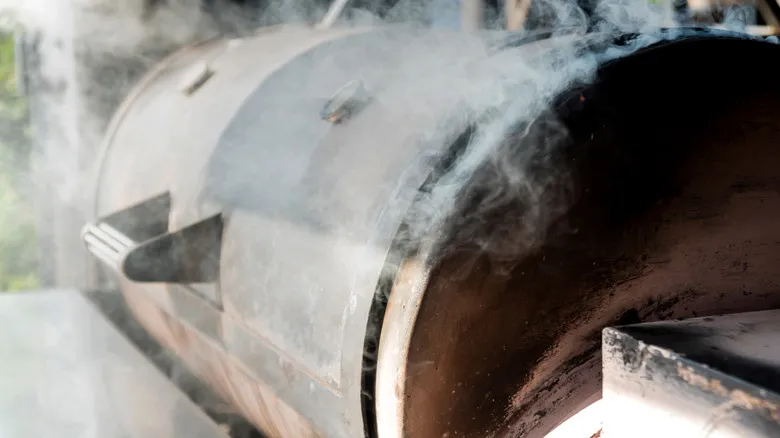
Nothing compares to the rich, smoky flavor of a steak straight from the grill. But what if you could elevate that smoky taste and aroma even further? Chef Robert Liberato, the corporate concept chef at STK Steakhouse, shared a little-known technique with us. He explained, "A fantastic secret in steakhouses is to lightly smoke your steak before cooking it. This method adds a profound depth of flavor and enhances the overall dining experience. After smoking, simply cook the steak as you normally would for a truly exceptional, steakhouse-quality meal."
Leroy Hite, founder and president of Cutting Edge Firewood, is also a strong advocate for smoking steak prior to grilling and provided some tips for achieving the best smoky flavor. "Smoke your steak at a low temperature — between 215 and 250 degrees; I prefer 215 degrees — and bring the steak's internal temperature to about 15 degrees below your desired doneness," he advised. "Then, sear the steak — create a large flame safely and sear the steak for one minute on each side directly over the fire." Don’t have a smoker? No worries! Check out this trick to convert any grill into a smoker.
Consider wood as a fuel source
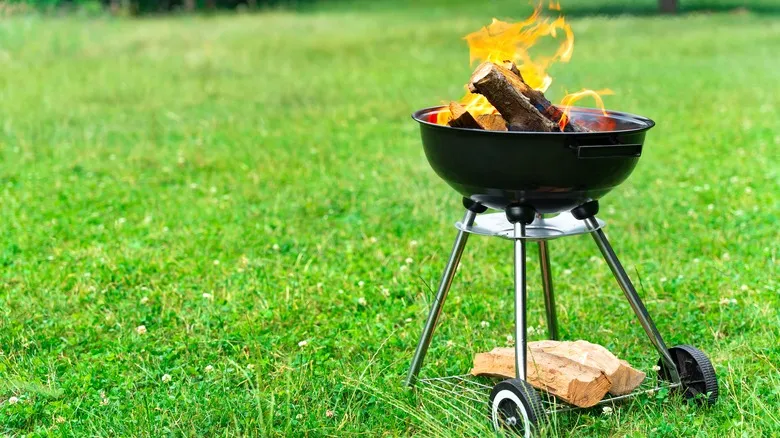
Whether you're considering pre-smoking your meat or simply grilling your seasoned steak as it is, many chefs agree that wood is essential for achieving incredible flavor. The smoke produced by the wood can infuse the steak with distinctive tastes and aromas that you won't find with charcoal or gas. Additionally, wood is a natural option, easy to ignite, and generates a significant amount of heat. It also burns longer than charcoal, meaning you won't have to replenish it as frequently.
Leroy Hite emphasizes that the type of wood you select can significantly impact the quality of your steak. For optimal results, he suggests using high-quality kiln-dried cooking wood. Different types of wood impart various flavors to the meat; for instance, wood from fruit trees adds subtle sweetness, while oak provides a stronger smoky taste. Hickory can introduce hints of bacon, and pecan offers a nutty flavor. Hite particularly favors hickory, cherry, and pecan wood for grilling.
Use the pull-away hand test to check the temperature of your grill

When it comes to mastering the art of grilling, controlling the temperature is crucial. If your grill isn't sufficiently hot, your steak may stick to the grates, preventing that essential sear that locks in juices and imparts a delicious caramelization and smoky flavor. Conversely, if the grill is too hot, your steak could end up charred on the outside while remaining undercooked on the inside. Striking the right balance is vital for achieving steakhouse-quality results.
"To determine if your coals are hot enough for cooking, hold your hand about six inches above them and count how long you can keep it there," advises Jonathan Gill, executive chef of RingSide Steakhouse. According to Gill, if you can withstand the heat for just two to four seconds, your grill is at high heat. Holding on for five to seven seconds indicates medium heat, while eight to ten seconds suggests low heat. Anything longer than that is too low. If you can endure the heat for up to a minute, Gill suggests you might as well "use the camp stove instead."
Your steaks should be at room temperature before cooking them
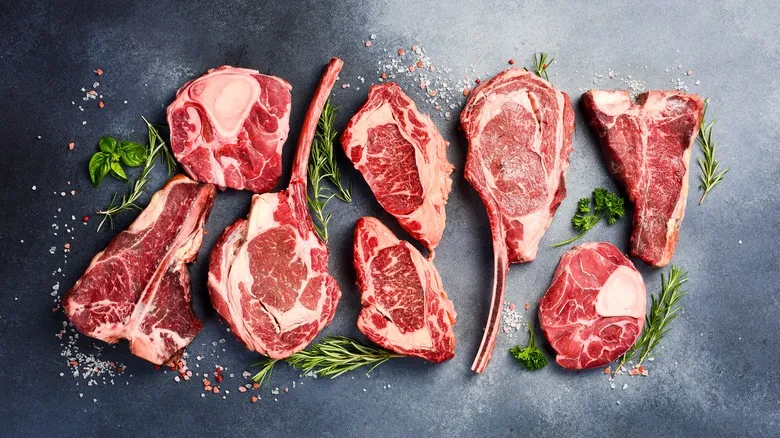
You've taken your steaks out of the fridge, seasoned them generously, and heated your grill or skillet to an extremely high temperature. However, when you place the steaks on the heat, you find that they are burnt on the outside and too rare in the center. What went wrong? The issue may be that your steaks were too cold. No matter how hot your grill is, cold meat won't cook as uniformly as meat that has reached room temperature.
Lior Lev Sercarz, chef and owner of La Boîte, explains, "Cold meat will cause the grill to lose heat immediately, resulting in less effective cooking. This can lead to uneven results, where the exterior is charred while the interior remains undercooked. Ideally, you should start with meat that is closer to room temperature for a consistent cook throughout." A helpful tip for achieving evenly cooked beef every time is to remove the meat from the fridge and let it rest for 30 minutes to an hour, allowing it to reach room temperature.
Use a hot cast-iron skillet or carbon steel pan over a grill for the best sear and crust
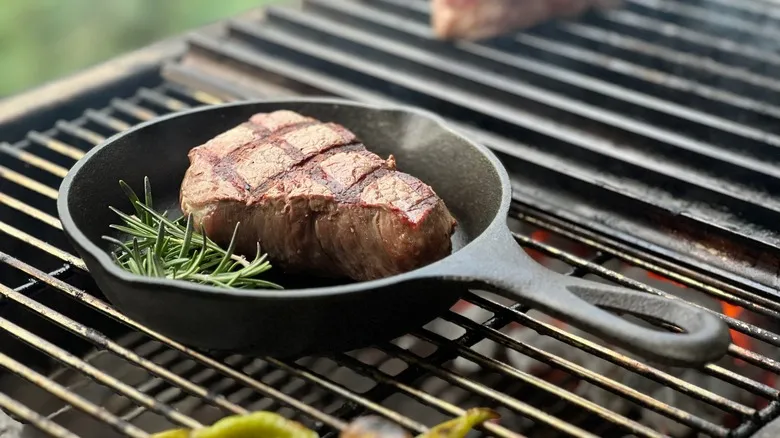
There are numerous methods to prepare a steak, including grilling, broiling, and the sous vide technique. Nonetheless, many chefs concur that using a cast iron pan is essential for achieving a perfectly seared steak. "I prefer a hot cast iron skillet or carbon steel pan over a grill for the best sear and crust," stated David Figueroa. "Steakhouses utilize broilers or flat surfaces to create this effect, and a hot pan can mimic that ideal crust."
Chef Michael Mina, founder of MINA Group and Bourbon Steak, provided further insight. "A cast iron griddle is outstanding for heat retention and distribution, which guarantees consistent cooking results," he explained. "When cooking steak, it's crucial to achieve an even sear across the meat's surface while also creating that crusty texture and rich flavor that defines a restaurant-quality steak." Chef Mina also pointed out that cast iron has a naturally non-stick surface, making it easy to flip the meat. Additionally, the natural seasoning develops with each use, enhancing the flavor of your dishes.
Start hot, then lower the temperature

One of the essential principles many of us learn about cooking steak is the importance of searing it at a high temperature initially to form a crust and retain the juices. Chef Kylian Goussot explained, "Cooking your meat on a well-heated surface enhances the Maillard reaction. This reaction occurs when the meat is cooked at a sufficiently high temperature, causing it to caramelize. This is what imparts that irresistible flavor everyone enjoys."
Experienced grillers understand the necessity of preheating the grill or pan and ensuring it is extremely hot before adding the meat. Patience is key, as Chef Nickenford Joseph of Vinyl Steakhouse cautioned, "If the pan isn't hot enough, you won't achieve a good sear or char on the steak, leading to a lack of flavor. Aim for a grill temperature between 450 to 500 degrees. Sear both sides of the steak well to create a delicious crust and lock in the flavor." Many chefs also suggest flipping the steak frequently to ensure even cooking.
You can also try the reverse sear

It's undeniable that starting with a sear on your steak can create a wonderfully caramelized crust. However, a common misconception is that this initial burst of high heat is the only effective method. An alternative approach can help cook the meat more uniformly while still achieving that beautiful browned exterior. This method is known as reverse searing, which involves cooking the steak gently at first and then applying high heat for a perfect sear.
For reverse searing, Chef Jonathan Milan of Ocean Prime in Beverly Hills suggests using the sous vide method. "Let's be honest, there's no home grill or broiler that can reach the 1,600 to 2,000-degree temperatures found in steakhouse broilers," he explained. "Sous vide your steak to your preferred temperature, then dry it off, allow it to reach room temperature, and sear it in an extremely hot pan or grill. Once you achieve a fantastic sear, simply serve it with your favorite sauce."
Use a meat probe to monitor and manage temperature
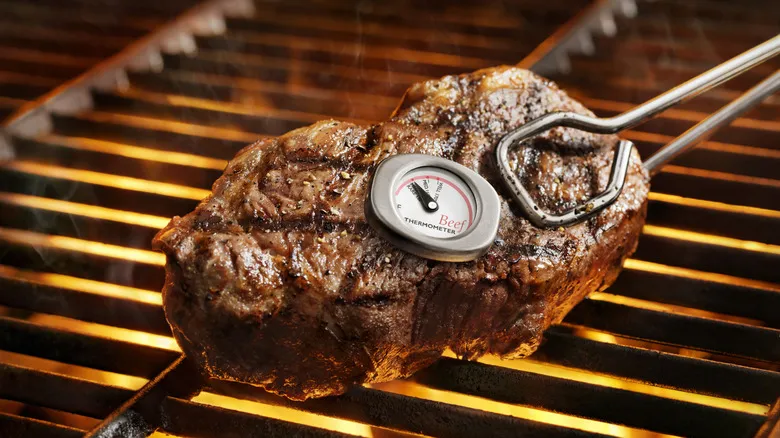
If there's one thing that can spoil even the finest steak, it's overcooking the meat. As Adonis Icalina, chef and owner of Carnivore Style, explains, "Overcooking results in a tough, dry steak that lacks flavor." A reliable method to prevent overcooking is to use a meat probe, or meat thermometer, to monitor the internal temperature. "For a medium-rare steak, aim for an internal temperature of 130 to 135 degrees Fahrenheit," Icalina advises. "Remember that the steak will continue to cook slightly after being removed from the heat, so it's wise to take it off a little underdone."
Not a fan of medium-rare? Here are some general temperature guidelines for rare, medium, and well-done steaks. For a rare steak, cook it to 115 degrees Fahrenheit at its thickest part, which should rise to about 120 degrees when it's ready to serve. Medium steaks should reach around 140 degrees, while medium-well should be about 150 degrees. Well-done steaks should be cooked to approximately 155 degrees on the grill and served at a temperature between 160 to 165 degrees.
Resting the meat is crucial
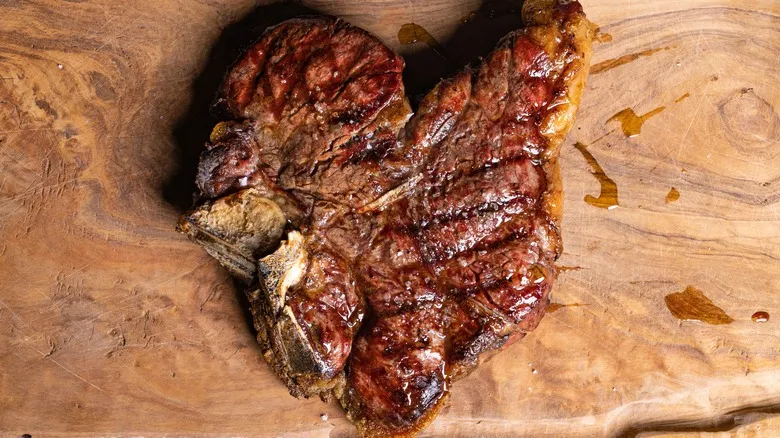
After all the effort you've put into seasoning, searing, and cooking your steak to perfection, it might be tempting to dig right in. However, nearly every expert we consulted warned that slicing into meat straight off the grill is a significant error. Adonis Icalina explained, "When you cook a steak, the juices inside heat up and move toward the center. If you cut into the steak right after cooking, those juices will escape onto the plate, leaving the meat dry."
The secret to achieving juicier, more flavorful meat lies in allowing it to rest after removing it from the grill. Resting enables the juices in the steak to redistribute throughout the meat. It also allows some of the muscle fibers to expand slightly, resulting in a more tender texture. Most chefs recommend letting your meat rest for at least five to ten minutes, and even up to 45 minutes, depending on the thickness of the cut. As Lior Lev Sercarz noted, "The longer it takes to cook, the longer it should rest so the juices can settle in and not be lost with the first cuts."
Don't settle for boring potatoes
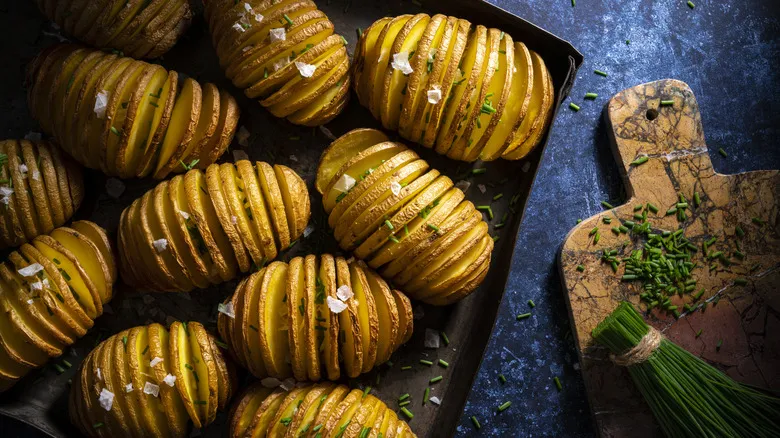
Steak and potatoes are a timeless duo, but they can sometimes lack excitement. Steakhouse chefs understand that the secret to a remarkable steak dinner lies in enhancing the flavors of the side dishes. "Pairing rich, fatty meat with equally rich sides can be overwhelming, so it's essential to introduce freshness and acidity," Jonathan Milan explained. "Load your starches with plenty of cream and butter, and complement them with charred broccoli drizzled with lemon or a crisp salad on the side. Personally, I find that nothing pairs better with my steak than a well-aged piece of kimchi."
ButcherBox chef Ashley Lonsdale also suggests boosting the fat and acidity in your side dishes. "If you want to replicate that steakhouse flavor, be ready to use a bit more butter, cream, and cheese than you might typically use," she advised. "I always add something acidic, like a vibrant salad or marinated grilled vegetables, to counterbalance the richness of the steak. Plus, don’t hesitate to grill your sides if you’re already firing up the grill for the steaks; it’s a fantastic way to infuse that charred, smoky flavor throughout the entire meal."
Use smoked cheese in your sides
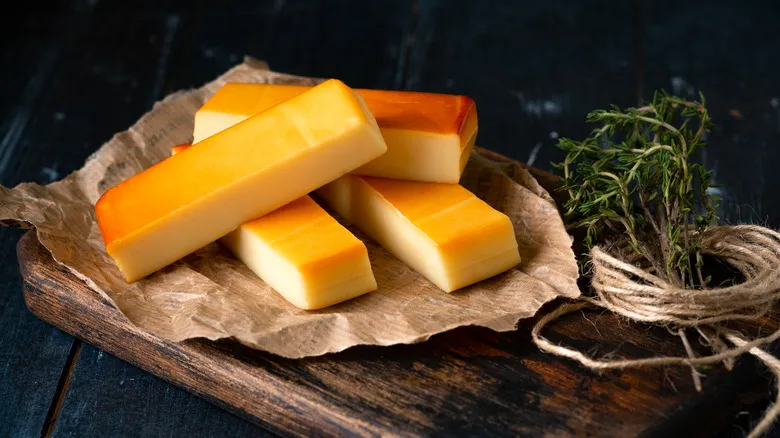
If you're in search of a distinctive ingredient for your side dishes, Leroy Hite suggests trying smoked cheese. While many might not typically pair smoked cheese with steak, Hite believes it can be a fantastic complement to steakhouse sides. "Smoked cheese is amazing and incredibly versatile," he noted. "Take an aged Tillamook cheddar, place it in a metal bowl or dish, and smoke it over cherry wood at 250 degrees for 30 minutes. Once it's smoked, you can incorporate this flavorful cheese into casseroles, salads, flatbreads, or serve it on a charcuterie board."
One classic steakhouse side that can be enhanced with smoked cheese is mac and cheese. By adding some smoked gouda or a cheese you've smoked yourself, you can instantly elevate the dish. Another way to infuse that rich smoky flavor is by incorporating liquid smoke into your mac and cheese. Alternatively, you can prepare your mac and cheese in a backyard smoker or on the grill to deepen the smoky taste.
Vibrant sauces can make the meat shine
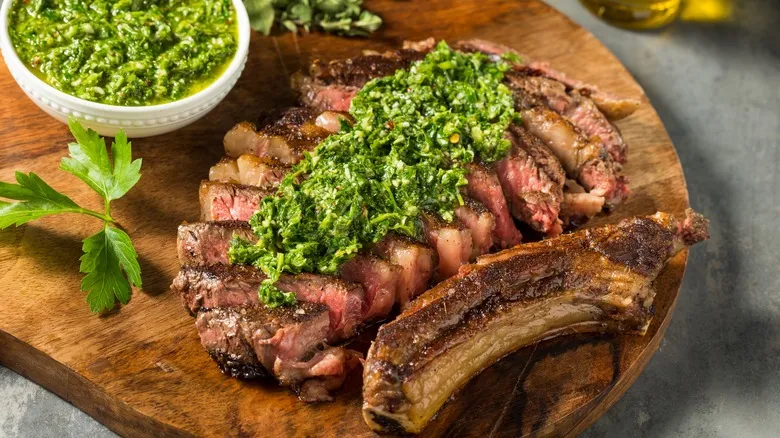
Many chefs will assert that a top-quality steak requires nothing more than salt and pepper. While that may hold some truth, a delicious sauce can elevate your steak dinner to new heights. The key is to select a robust sauce that complements the meat's flavors. Some highly flavorful sauces that pair wonderfully with steak include peppercorn sauce, chimichurri, red wine sauce, blue cheese sauce, and béarnaise.
Regarding sauces, Jonathan Milan remarked, "Not everyone has the resources or time to prepare elaborate butter sauces or wine reductions. Honestly, you don’t need those to enjoy an exceptional steak experience. Consider what other cultures pair with their steak. Think of chimichurri made with fresh herbs or a spicy harissa combined with mint raita. Nuoc cham is also a fantastic condiment, or try mixing high-quality sesame oil with coarse sea salt for an incredible steak accompaniment. Have fun and step outside your comfort zone."
Recommended
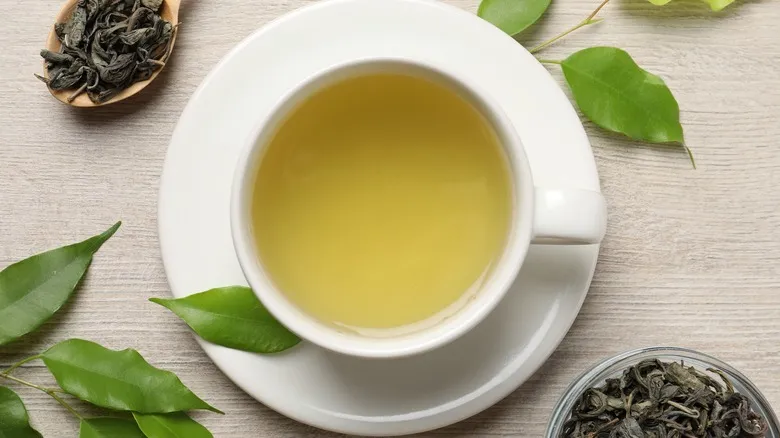
What Kind Of Tea Is Caffeine Free?
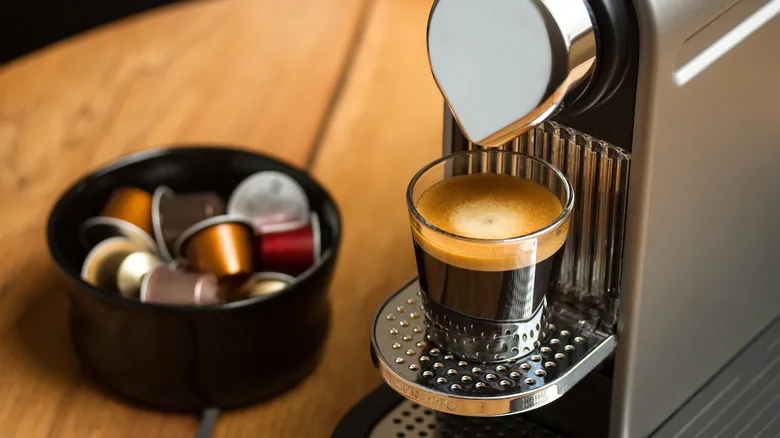
What To Do If Your Nespresso Machine Gets Moldy
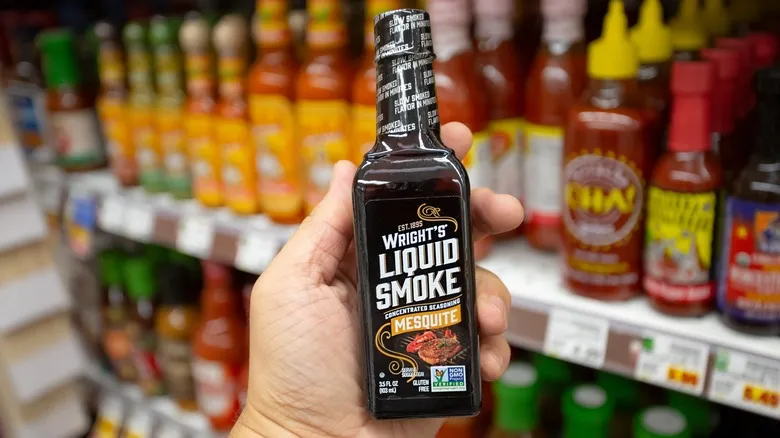
What Is Liquid Smoke And Why Should You Care?

How Anthony Bourdain Felt About Modern Coffee Shops
Next up

